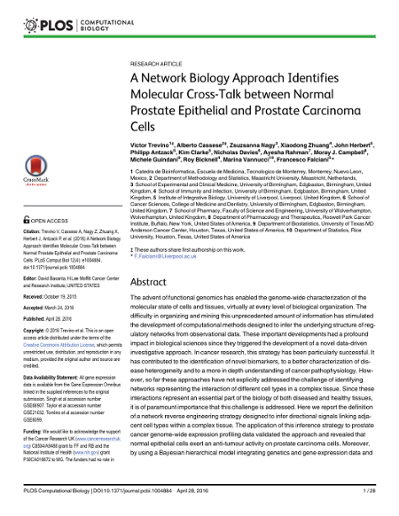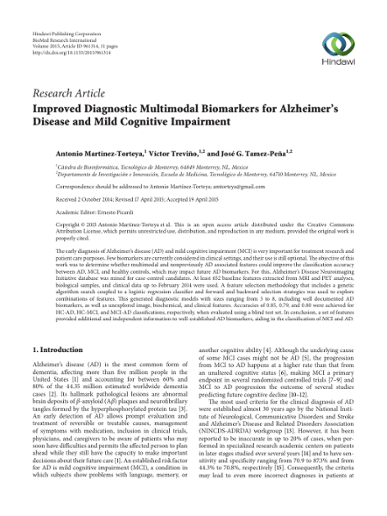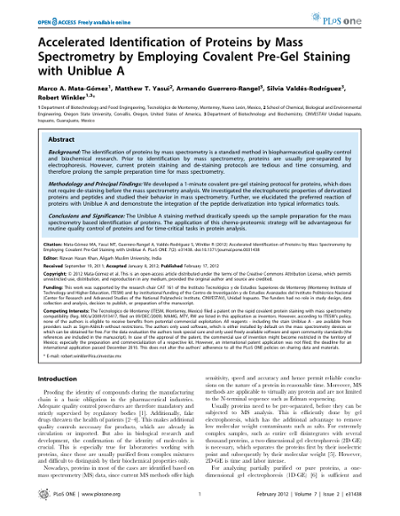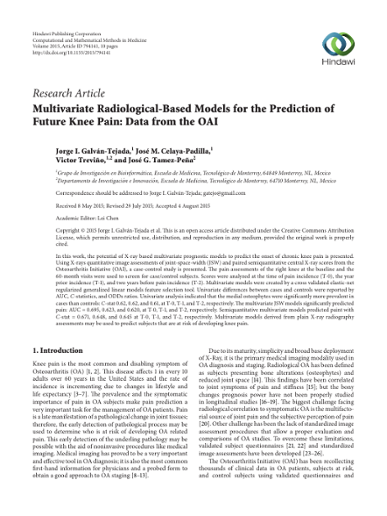| dc.creator | Víctor Manuel Treviño Alvarado | |
| dc.date | 2016 | |
| dc.date.accessioned | 2018-10-19T14:22:12Z | |
| dc.date.available | 2018-10-19T14:22:12Z | |
| dc.identifier.issn | 1553734X | |
| dc.identifier.doi | 10.1371/journal.pcbi.1004884 | |
| dc.identifier.uri | http://hdl.handle.net/11285/630657 | |
| dc.description | Abstract: The advent of functional genomics has enabled the genome-wide characterization of the molecular state of cells and tissues, virtually at every level of biological organization. The difficulty in organizing and mining this unprecedented amount of information has stimulated the development of computational methods designed to infer the underlying structure of regulatory networks from observational data. These important developments had a profound impact in biological sciences since they triggered the development of a novel data-driven investigative approach. In cancer research, this strategy has been particularly successful. It has contributed to the identification of novel biomarkers, to a better characterization of disease heterogeneity and to a more in depth understanding of cancer pathophysiology. However, so far these approaches have not explicitly addressed the challenge of identifying networks representing the interaction of different cell types in a complex tissue. Since these interactions represent an essential part of the biology of both diseased and healthy tissues, it is of paramount importance that this challenge is addressed. Here we report the definition of a network reverse engineering strategy designed to infer directional signals linking adjacent cell types within a complex tissue. The application of this inference strategy to prostate cancer genome-wide expression profiling data validated the approach and revealed that normal epithelial cells exert an anti-tumour activity on prostate carcinoma cells. Moreover, by using a Bayesian hierarchical model integrating genetics and gene expression data and combining this with survival analysis, we show that the expression of putative cell communication genes related to focal adhesion and secretion is affected by epistatic gene copy number variation and it is predictive of patient survival. Ultimately, this study represents a generalizable approach to the challenge of deciphering cell communication networks in a wide spectrum of biological systems. © 2016 Trevino et al. | |
| dc.language | eng | |
| dc.publisher | Public Library of Science | |
| dc.relation | https://www.scopus.com/inward/record.uri?eid=2-s2.0-84964702648&doi=10.1371%2fjournal.pcbi.1004884&partnerID=40&md5=36bf44a4ca133eea43cb4dbaff2ed11d | |
| dc.relation | Investigadores | |
| dc.relation | Estudiantes | |
| dc.rights | info:eu-repo/semantics/openAccess | |
| dc.rights.uri | http://creativecommons.org/licenses/by-nc-nd/4.0 | |
| dc.source | PLoS Computational Biology | |
| dc.subject | Article | |
| dc.subject | bioengineering | |
| dc.subject | cancer survival | |
| dc.subject | cell communication | |
| dc.subject | cell function | |
| dc.subject | cell interaction | |
| dc.subject | DNA damage | |
| dc.subject | gene dosage | |
| dc.subject | gene expression | |
| dc.subject | gene overexpression | |
| dc.subject | gene regulatory network | |
| dc.subject | genetic association | |
| dc.subject | genetic variability | |
| dc.subject | human | |
| dc.subject | network reverse engineering | |
| dc.subject | outcome assessment | |
| dc.subject | polarization | |
| dc.subject | prediction | |
| dc.subject | prognosis | |
| dc.subject | prostate cancer cell line | |
| dc.subject | prostate carcinoma | |
| dc.subject | prostate epithelium cell | |
| dc.subject | signal transduction | |
| dc.subject | transcription regulation | |
| dc.subject | validation process | |
| dc.subject | Bayes theorem | |
| dc.subject | biological model | |
| dc.subject | biology | |
| dc.subject | cell line | |
| dc.subject | coculture | |
| dc.subject | cytology | |
| dc.subject | epithelium cell | |
| dc.subject | gene expression profiling | |
| dc.subject | gene regulatory network | |
| dc.subject | genetics | |
| dc.subject | male | |
| dc.subject | metabolism | |
| dc.subject | pathology | |
| dc.subject | prostate | |
| dc.subject | prostate tumor | |
| dc.subject | tumor cell line | |
| dc.subject | Bayes Theorem | |
| dc.subject | Cell Communication | |
| dc.subject | Cell Line | |
| dc.subject | Cell Line, Tumor | |
| dc.subject | Coculture Techniques | |
| dc.subject | Computational Biology | |
| dc.subject | Epithelial Cells | |
| dc.subject | Gene Expression Profiling | |
| dc.subject | Gene Regulatory Networks | |
| dc.subject | Humans | |
| dc.subject | Male | |
| dc.subject | Models, Biological | |
| dc.subject | Prostate | |
| dc.subject | Prostatic Neoplasms | |
| dc.subject | Signal Transduction | |
| dc.subject.classification | 7 INGENIERÍA Y TECNOLOGÍA | |
| dc.title | A Network Biology Approach Identifies Molecular Cross-Talk between Normal Prostate Epithelial and Prostate Carcinoma Cells | |
| dc.type | Artículo | |
| dc.identifier.volume | 12 | |
| dc.identifier.issue | 4 | |
| refterms.dateFOA | 2018-10-19T14:22:12Z | |




